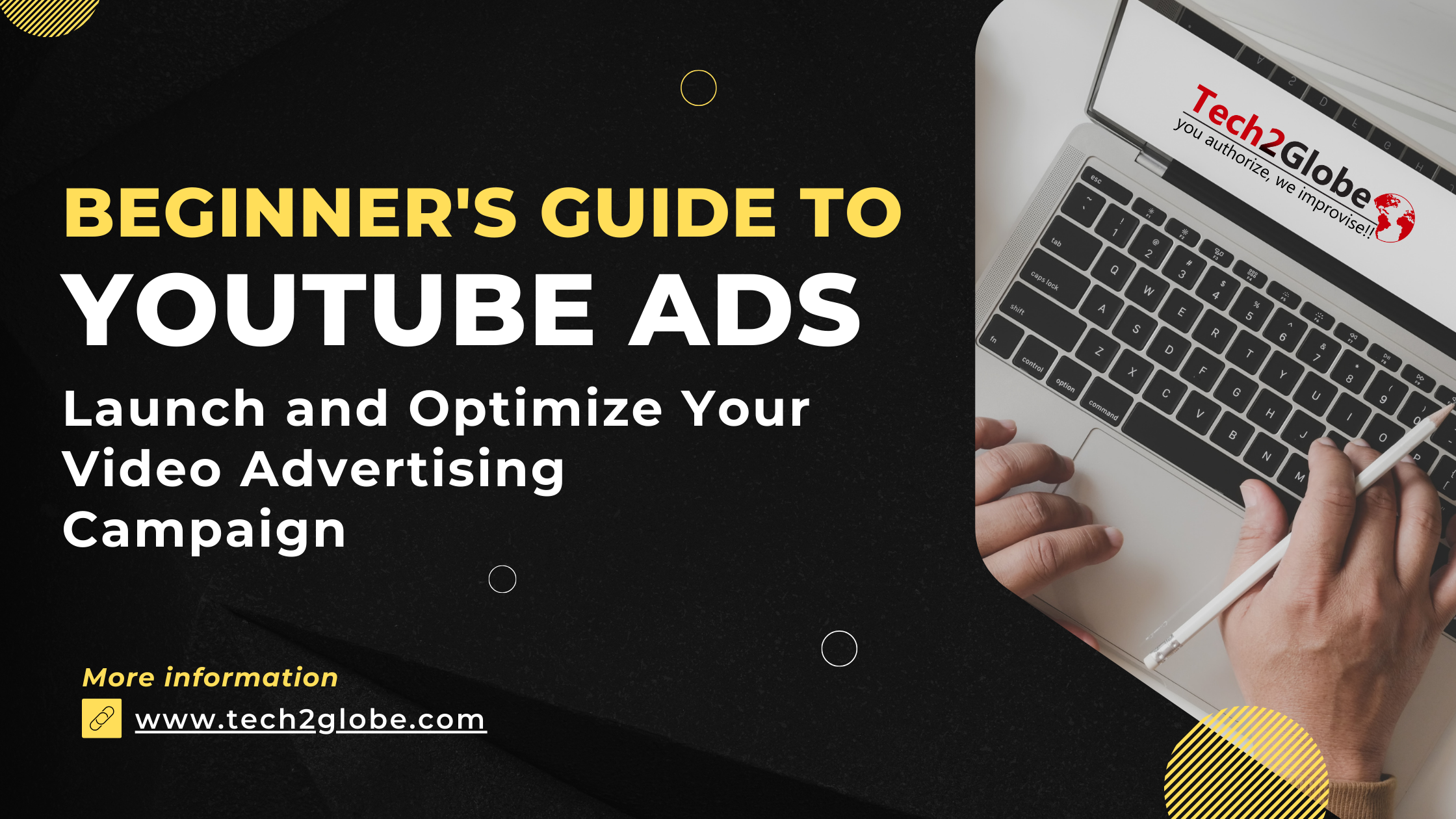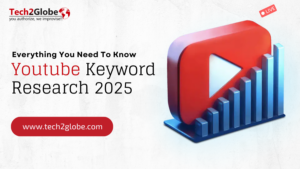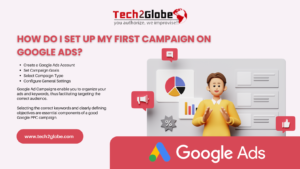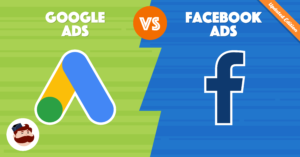Summary: Never run a YouTube ad Before? No problem! This blog explores the cost of YouTube ads, how to launch YouTube ad campaigns, and how to increase their effectiveness. Also, go through the simple steps to learn how to advertise on YouTube and optimize your campaigns.
Key Takeaways
- YouTube ads use Google’s data to find and reach the right audience.
- YouTube ads are cost-effective, only charging per click or view.
- Different types of YouTube ads on YouTube have various features and costs.
Are you also noticing more ads on YouTube? To generate more revenue, YouTube often updates its strategies. Sure thing! It dominates the video-sharing industry and attracts over two billion unique monthly visitors, making it the second most popular website. Thus, brands rely on its immense reach to promote their offerings.
Several businesses, influencers, content creators, non-profit organizations, and even individuals are creating YouTube ad campaigns. Moreover, the reach of video content can effectively capture the audience’s attention. However, excellent video ad campaigns require planning and execution.
What are YouTube Ads?
YouTube ads are video ads that appear on Google Display Network (GDN) partner sites, YouTube’s website, and apps. Moreover, these ads use all of Google’s user data to help advertisers find and reach the desired audience.
Are YouTube Ads Worth the Investment?
Yes, YouTube ads are worth the Investment, but only if you do it right. Also, YouTube advertising is one of the best strategies that businesses can consider. Find out why YouTube ads are worth it below:
- Cost-Effective: You know, PPC advertising is very cost-effective. YouTube advertising uses the same PPC model, making it very budget-friendly. PPC is profitable because you only pay when someone clicks your ad. Not only that, but you decide how much to pay per click.
- Highly Targeted – For a YouTube ad campaign to work, granular targeting is needed. Additionally, you can reach people based on age, gender, interests, past purchases, video remarketing, customer matches, similar audiences, life events, and affinity audiences. This approach lets you reach specific groups of people interested in your products or services, thereby making the best use of the money you spend on ads.
- Provide Fast Results: Unsurprisingly, YouTube has over 2 billion monthly users and produces fast results. More people seeing your ads means more clicks, website traffic, and sales. With such a large audience, YouTube guarantees fast results because more users are interested in your brand.
Types of YouTube Ads
There are different types of YouTube ad campaigns that you may choose on YouTube, such as:
Skippable in-stream ads
Skippable in-stream ads—formerly TrueView ads—can run before, during, or after videos between 12 seconds and six minutes.
A side Skip Ads button appears after five seconds of the ad. Additionally, advertisers only pay for people who watch their YouTube ad for 30 seconds or more and are interested in what it promotes.
Non-skippable in-stream ads
Non-skippable in-stream ads can precede, interrupt, or follow videos. They are non-skippable and have a maximum of 15 seconds. Instead of the Skip Ad button, viewers will see a countdown to know how long it will take to return to their video.
These short, non-skippable ads limit bidding. These are cost-per-mille (CPM), so advertisers pay per 1,000 YouTube views.
Bumper ads
Bump ads are almost identical to non-skippable ads except for length. Plus, these six-second ads can appear before, during, or after a video and cannot be skipped. Due to how quickly YouTube ads like this are viewed, use them to convey a concise message.
Masthead ads
YouTube homepage masthead ads run for 24 hours. This content plays silently for 30 seconds with a CTA or banner. Remember, you can only create this YouTube ad with a Google sales rep. However, it’s great for brand awareness and reaching a large audience quickly.
Discovery ads
Also referred to as in-feed video ads, this type of YouTube ad on YouTube aids users in finding video content within YouTube search results. For instance, consider searching “learn how to bake a cake.” The top result is a sponsored video that appears ahead of organic search results.
Display ads
YouTube desktop sidebar ads are display ads. Neither image nor video automatically plays when loaded. To hear the sound, hover the mouse over the display ad. Display ads are great because Google owns YouTube. Thus, you can show your YouTube campaign videos or images in unique placements across the Google Display Network.
How much do YouTube Ads cost?
The YouTube ads cost depends on many factors. However, cost depends on the audience, industry, ad watch time, campaign objective, and keywords. The average YouTube ad view or action costs $0.10 to $0.30. Spend as much or as little on YouTube ads. Lastly, Google will only charge you up to your daily budget, making YouTube ads a safe investment.
How to create YouTube Ads?
However, it’s not about how much you spend on YouTube. Your video should be unique and high-quality to stand out from the millions of others. Therefore, if you want to increase your video platform visibility with fun, attractive, and captivating content, try these video styles:
- Animations: Like TV commercials, these creative and entertaining pieces promote a product or service by engaging the audience.
- Explainer videos: They introduce your brand and convey a message in seconds.
- Videos promos: They show a product or service and encourage viewers to act with simple, bite-sized information.
How to run a YouTube Ad?
After creating your YouTube channel, next, it is time to advertise. Below, we have provided a clear and simple step-by-step guide on how to advertise on YouTube.
- Create a Google Ads account.
- Set your campaign goal.
- Upload your video to YouTube.
- Select your target audience.
- Set your budget and bidding strategy
- Set Targeting and Keywords
- Review and launch your campaign.
1. Create a Google Ads account.
Google owns YouTube, so you’ll use the same Google Ads (formerly AdWords) dashboard for creating and managing ads. Create a business account on Google Ads. Registration requires business information such as its name, website, and YouTube account. Start by clicking New Campaign in your Google Ads dashboard after creation.
2. Set your campaign goal.
First, determine your campaign objectives when making a YouTube ad. What do you want from your ads? How does it fit your YouTube marketing?
YouTube campaign goals often include:
- Leads for sales
- Website Traffic Product/brand assessment
- Reach and brand awareness
- App Promotion
- Local promotions and store visits
Know your goals early to prepare your ad creative for launch. Also, you can also create a campaign without a goal, but knowing your objective can help you choose the best bidding strategy.
3. Upload your video to YouTube.
After choosing a goal, make a YouTube advertising video. Best video ads:
- High-quality audio and video
- Appeal to your audience’s frustrations
- Starting with a solid five-second hook
- Tell a story to engage the audience.
- Call for action at the end.
Use a professional video editor to make static videos more engaging. In addition, descript is a tool that lets you add transitions, video templates, and animated subtitles to prevent YouTube “Skip ad” clicks.
When you finish your video advertisement, navigate to your YouTube Studio and click Upload Video. You can use the video from your company’s YouTube channel later when you set up your ad campaign.
4. Select your target audience.
After uploading your YouTube video, define your target audience in Google Ads Manager. Target similar people on YouTube:
- Location,
- Language
- Demographics (age, gender, parental status)
Also, you can target households by income in your campaign settings, but only in certain countries. Remember, your targeting parameters will affect your estimated weekly performance. Thus, you must target suitable viewers to avoid wasting YouTube ad money.
5. Set your budget and bidding strategy.
Choose how much your digital marketing budget will spend on YouTube ads on the next page. Select a billing currency and daily spending limit. Your ads will run daily until they reach that budget.
Similarly, schedule your campaign. Once you reach your end date, the campaign will end automatically.
6. Set Targeting and Keywords.
To reach the right audience, Google Ads for video offers many targeting options. Firstly, identify your potential customer’s likes and interests. Also, examine all options and be specific. Here are the main approaches:
- Interests and topics.
- Word or phrase keywords.
- Placement, such as YouTube subscribers from other sites/channels.
7. Review and launch your campaign.
This final page lets you review your YouTube ads campaign setup:
- Campaign name
- Video ad
- Landing page
- Button
- Headline
- Targeting options
- Budget
Furthermore, your billing information will be requested for your first campaign. If you’ve advertised on YouTube and added billing information, your video will be creatively reviewed to meet advertising standards.
How to Optimize a YouTube Ad Campaign?
After creating a YouTube ad and launching it, it is vital to optimize your YouTube ad campaign. However, optimizing isn’t easy, which is why you can follow these easy tips to make sure you won’t waste your efforts:
Analyze and change targeting.
Consequently, ensure you keep track of your bottom-line metrics and YouTube ads performance throughout your campaign. Additionally, remember that your YouTube advertisement’s CPC or CPM depends on its targeting and breadth. Similarly, experiment to find your best targeting option. For example, create different ad groups with slightly different targeting options to find the best clicks and conversions.
Improve your ads and messages.
World-class YouTube campaigns aren’t scientific. It’s an art form—experiments can reveal which creatives make viewers click the call to action instead of skipping the video.
Thus, test your YouTube ads by changing their elements. Also, keep your messaging consistent and avoid confusing potential customers with multiple messages.
Use remarketing and special audiences.
Furthermore, create a custom audience ad campaign to retarget audiences who may have subscribed to your channel, visited your website, or searched for your product. If sales and leads are your main goals, remarketing campaigns can be very effective. Plus, studies show that clicks on retargeting ads are eight times cheaper than generic campaigns.
Pick the best tools to edit your video ads.
Using the right editing tools helps create engaging video ads. As mentioned before, professional YouTube video editors can help you create engaging YouTube ads that keep viewers watching and taking action.
Try different bidding methods.
YouTube offers several video advertising payment options. Therefore, return to your campaign settings and set a maximum bid per view or action. Choose from:
- Target CPM: Set a price for 1,000 views.
- Maximum CPV: Set your maximum per-view campaign price unless you have a low funnel audience and strict conversion goal.
- Convert as many as possible within your budget.
- Target CPA: Set a conversion price.
Conclusion
Now, you’ve learned every step of how to advertise YouTube ads. Thus, you should feel more confident about advertising in the second most popular search engine. However, the most important lesson is that no matter how much you pay for advertising, you must have outstanding content to succeed on any network.
We’ll gladly assist you with creating a high-quality and convincing commercial. Furthermore, just contact us and leverage our YouTube Advertising Services. Moreover, our experts are here to help you with all your concerns regarding YouTube advertisements
Frequently Asked Questions (FAQs)
Q.1. Can I advertise my content on YouTube?
A.1. Advertising on YouTube is free for any business with a Google Ads account. So, with simple and easy steps, you can advertise your content. The first step is to upload your video to YouTube. Then, create a new campaign, select your target audience, and decide on a bidding strategy.
Q.2. How do you optimize your YouTube ads?
A.2. In order to keep people engaged and coming back for more, it’s a good idea to schedule your in-stream ad to run for a month. Ads on YouTube and other Google Display Network partners can have their frequency capped, allowing you to control how often users see your ads.
Q.3. How much does it cost to advertise on YouTube?
A.3. Advertisers pay for YouTube videos in several ways. Thus, you should budget $0.49 per click or $0.026 per video view.
Q.4. How Much YouTube Pays You for 1,000 Views
A.4. The type of ad, the viewer’s location, and the advertiser’s budget all affect the significantly different amount of money a YouTuber earns per view. YouTube pays typically between $0.01 and $0.03 per view. A YouTuber should make between $10 and $30 for every 1,000 views.

Sarabjeet Singh is the Vice President of Operations at Tech2Globe and brings over 15 years of experience in various industries, including IoT, education, retail, government, FMCG, hospitality, and e-commerce. His leadership focuses on operational excellence and exceeding customer expectations, implementing contemporary solutions. Sarabjeet’s expertise spans e-commerce consulting, software development, data management, BPO/KPO support services, digital marketing, graphics, and startup consulting. He fosters a collaborative work environment, ensuring Tech2Globe delivers high-quality solutions.










